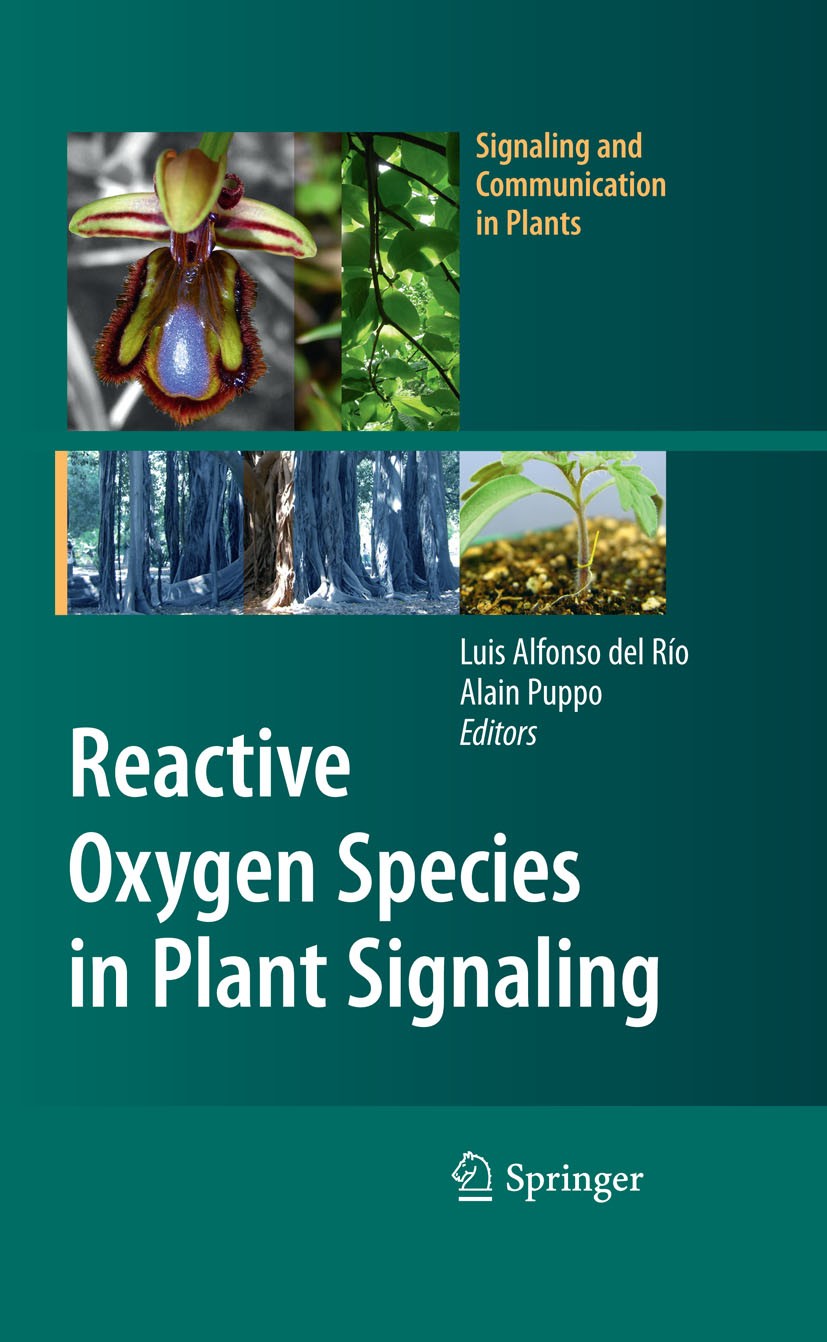| 书目名称 | Reactive Oxygen Species in Plant Signaling |
| 编辑 | Luis Alfonso Rio,Alain Puppo |
| 视频video | http://file.papertrans.cn/822/821889/821889.mp4 |
| 概述 | Presents recent advances in the field of reactive oxygen species (ROS) in plants highlighting new data and concepts |
| 丛书名称 | Signaling and Communication in Plants |
| 图书封面 |  |
| 描述 | Oxygen (O ) appeared in significant amounts in the Earth’s atmosphere over 2. 2 2 billion years ago, largely due to the evolution of photosynthesis by cyanobacteria (Halliwell 2006). The O molecule is a free radical, as it has two impaired electrons 2 that have the same spin quantum number. This spin restriction makes O prefer to 2 accept its electrons one at a time, leading to the generation of the so-called reactive oxygen species (ROS). The chemical nature of these species dictates that they can create damage in cells. This has contributed to the creation of the “oxidative stress” concept; in this view, ROS are unavoidable toxic products of O metabolism and 2 aerobic organisms have evolved antioxidant defences to protect against this tox- ity (Halliwell 1981; Fridovich 1998). Indeed, even in present-day plants, which are full of antioxidants, much of the protein synthetic activity of chloroplasts is used to replace oxidatively damaged D1 and other proteins (Halliwell 2006). Yet, the use of the “oxidative stress” term implies that ROS exert their effects through indiscriminate widespread inactivation of cellular functions. In this context, ROS must not be able to react with lipid |
| 出版日期 | Book 2009 |
| 关键词 | Cadmium; Chloroplast; Expression; Pathogen; Plant Cell Biology; Plant Molecular Biology; Plant Physiology; |
| 版次 | 1 |
| doi | https://doi.org/10.1007/978-3-642-00390-5 |
| isbn_softcover | 978-3-642-24261-8 |
| isbn_ebook | 978-3-642-00390-5Series ISSN 1867-9048 Series E-ISSN 1867-9056 |
| issn_series | 1867-9048 |
| copyright | Springer-Verlag Berlin Heidelberg 2009 |
 |Archiver|手机版|小黑屋|
派博传思国际
( 京公网安备110108008328)
GMT+8, 2025-11-13 04:06
|Archiver|手机版|小黑屋|
派博传思国际
( 京公网安备110108008328)
GMT+8, 2025-11-13 04:06


